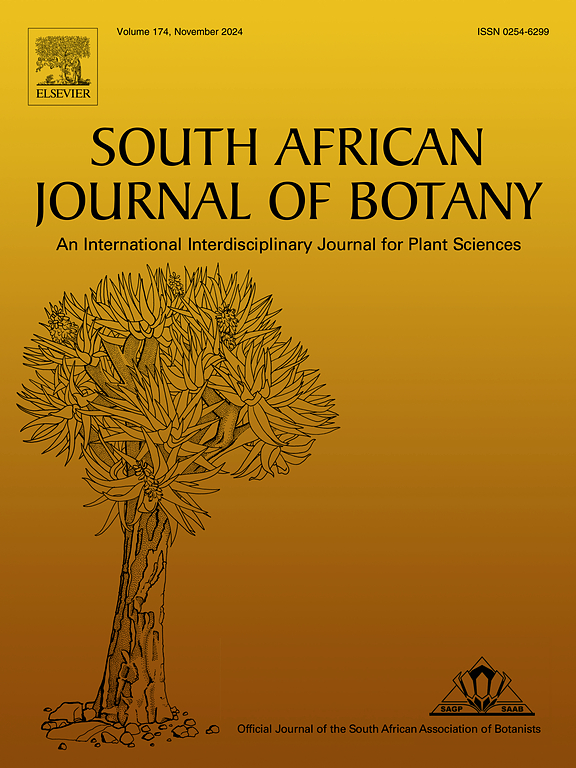南非对了解植物入侵生态学和管理的贡献
IF 2.7
3区 生物学
Q2 PLANT SCIENCES
引用次数: 0
摘要
本文简要介绍了南非外来植物入侵的生态学和管理研究的历史。超过2000种外来植物被引入该国,超过750种已知已归化或入侵。这种归化植物群的一个显著特征是树木和灌木的异常高优势,使南非成为世界树木入侵之都。对这些入侵的生态学和管理的研究始于100多年前。在20世纪上半叶,研究的重点几乎完全集中在生物控制和芬波斯生物群落的入侵物种上。20世纪下半叶,几项倡议推动了研究议程的扩大,其中包括环境问题科学委员会(SCOPE)关于“生物入侵的生态学”的全球项目(起源于南非),CSIR的国家生态系统研究计划,以及“为水而努力”计划。2004年,世界上第一个(直到最近也是唯一一个)专门研究生物入侵各个方面的研究机构在南非成立。该研究所(DST-NRF入侵生物学卓越中心)对增进对外来植物入侵的了解和建立管理它们的能力作出了重大贡献。入侵的真实程度已证明难以估计,但有迹象表明,该国10%的表面面积已被入侵,而且这一数字还在增加。入侵最多的生物群落是印度洋海岸带(11%),其次是菲恩波斯(5%)。已经报道了对生物多样性、水资源、畜牧业生产和野火严重程度的生态影响。这些影响加在一起,估计每年给国家造成约8.75亿美元(约合170亿南非兰特)的损失,但有关成本的数据很少。20世纪70年代初开始了广泛的控制计划,旨在消除芬博斯集水区入侵的树木和灌木。20世纪90年代,“为水而努力”项目扩大了这些努力,该项目在全国范围内开展,具有控制外来入侵植物和创造就业机会的双重目标。很少有强有力的尝试来监测这些干预措施的有效性。一些研究发现,在某些地区,入侵的程度已经减少,而在另一些地区,控制是无效的。当在全国范围内进行评估时,尽管采取了控制措施,入侵似乎仍在继续增长。在国家层面上,一些受生物控制的物种的数量已经下降,这说明了这种做法所起的重要作用。南非科学家对入侵科学领域做出了重大贡献,与资金更充裕的发达国家相比,他们的贡献超出了他们的能力。未来外来植物入侵管理面临的挑战包括资金的减少和对该问题复杂的社会生态性质的认识。鉴于已经建立的能力和理解,南非相对来说处于应对这些挑战的有利地位。本文章由计算机程序翻译,如有差异,请以英文原文为准。
South African contributions to the understanding of plant invasion ecology and management
This paper provides a brief selective history of research into the ecology and management of alien plant invasions in South Africa. Over 2000 alien plant species have been introduced to the country, and over 750 species are known to have become naturalized or invasive. A striking feature of this naturalized flora is the unusually high dominance of trees and shrubs, making South Africa the world capital of tree invasions. Research into the ecology and management of these invasions began over 100 years ago. In the first half of the 20th century the focus was almost exclusively on biological control and invasive species in the fynbos biome. A broadening research agenda in the second half of the 20th century was facilitated by several initiatives, including the Scientific Committee on Problems of the Environment’s (SCOPE) global project on “The Ecology of Biological Invasions” (which had its origins in South Africa), the CSIR’s National Programs for Ecosystem Research, and the Working for Water program. In 2004, the world’s first (and until recently only) research institute devoted solely to all facets of biological invasions was established in South Africa. This institute (the DST-NRF Centre of Excellence for Invasion Biology) made a substantial contribution to improving the understanding of alien plant invasions, and to building capacity to manage them. The true extent of invasions has proven difficult to estimate, but indications are that 10 % of the surface area of the country has been invaded, and that this is increasing. The most invaded biome is the Indian Ocean coastal belt (11 % invaded) followed by the fynbos biome (5 % invaded). Ecological impacts on biodiversity, water resources, livestock production and the severity of wildfires have been reported. Taken together, these impacts are estimated to be costing the country around USD 875 million (approximately ZAR 17 billion) per year, but data on costs are scant. Extensive control programs aimed at eliminating invasive trees and shrubs from the water catchment areas of the fynbos were initiated in the early 1970s. These efforts were expanded in the 1990s by the Working for Water program which operated at a national level with the dual goals of controlling invasive alien plants and creating employment. There have been few robust attempts to monitor the effectiveness of these interventions. Some studies have found that the extent of invasion has been reduced in selected areas while in others control has been ineffective. When assessed at a national scale, it appears that invasions have continued to grow despite control efforts. Populations have declined at a national level for some species under biological control, illustrating the important role that this practice has played. South African scientists have made substantial contributions to the field of invasion science, punching above their weight compared to better-funded developed nations. Challenges to the management of alien plant invasions in future include declining funding and a realisation of the complex social-ecological nature of the problem. Given the capacity and understanding that has been built, South Africa is comparatively well placed to address these challenges.
求助全文
通过发布文献求助,成功后即可免费获取论文全文。
去求助
来源期刊

South African Journal of Botany
生物-植物科学
CiteScore
5.20
自引率
9.70%
发文量
709
审稿时长
61 days
期刊介绍:
The South African Journal of Botany publishes original papers that deal with the classification, biodiversity, morphology, physiology, molecular biology, ecology, biotechnology, ethnobotany and other botanically related aspects of species that are of importance to southern Africa. Manuscripts dealing with significant new findings on other species of the world and general botanical principles will also be considered and are encouraged.
 求助内容:
求助内容: 应助结果提醒方式:
应助结果提醒方式:


